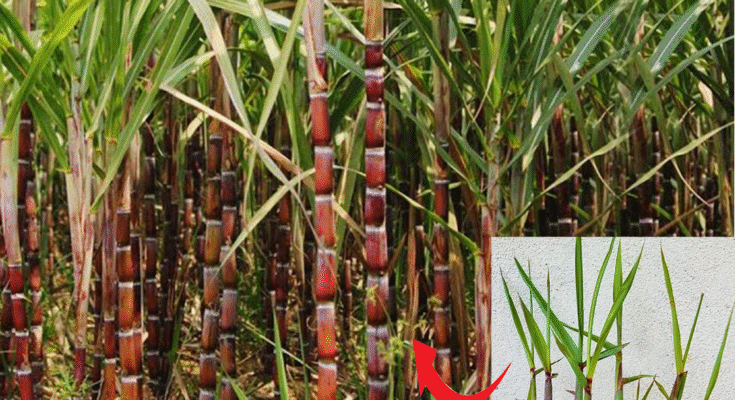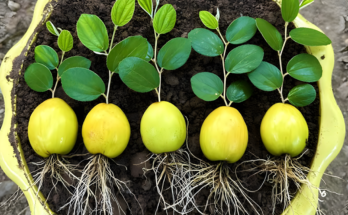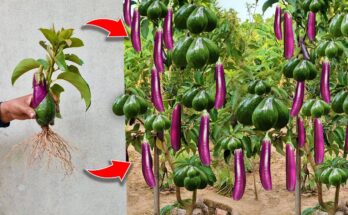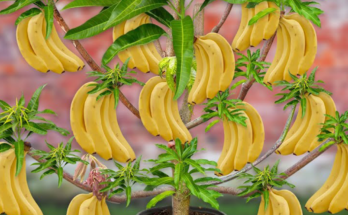Easy Way To Grow Sugarcane Using Banana With Unique Techniques
Growing sugarcane is one of the most rewarding farming activities because this plant produces a sweet and valuable crop that can be used for sugar, juice, and even animal feed. But what if you could grow sugarcane faster, healthier, and with higher yield by using banana plants? This unique method combines the natural strength of sugarcane with the moisture and nutrient support from banana plants. By following this special growing technique, you can achieve impressive results in a short time, even if you are a beginner. Let’s explore the easy and unique steps for growing sugarcane using banana.
1. Why Combine Sugarcane and Banana Plants?
The combination of sugarcane and banana plants is not only innovative but also practical. Both crops are tropical plants that grow well in warm and humid environments. Bananas have large, broad leaves that provide shade and maintain soil moisture, while sugarcane has deep roots that improve soil aeration. When grown together, they help each other:
- Banana leaves protect young sugarcane shoots from strong sunlight.
- Banana roots release organic matter that nourishes the soil.
- Sugarcane stems benefit from the moist, fertile environment near the banana roots.
This partnership results in faster growth, stronger stems, and sweeter juice content.
2. Choosing the Right Varieties
Before planting, choose suitable varieties for your region.
- For sugarcane: Select early-maturing and high-sucrose varieties such as CO 86032, BO 91, or CP 69-1062.
- For banana: Choose strong and short varieties such as Namwah, Cavendish, or Monthan, which have stable roots and do not compete too heavily with sugarcane.
Using compatible types ensures that both plants grow harmoniously without excessive competition for water and nutrients.
3. Preparing the Soil
Soil preparation is the foundation of success. Sugarcane and banana both need rich, well-drained, and slightly acidic soil (pH 5.5–6.5). Follow these steps:
- Clear the area and remove weeds or old roots.
- Loosen the soil to a depth of 30–40 cm for good root penetration.
- Add organic compost or cow manure (at least 5 kg per square meter) to enrich the soil.
- Mix banana peel fertilizer or ash into the soil. Banana peels are rich in potassium, which sugarcane loves.
This preparation ensures that your plants start with nutrient-rich soil that promotes fast growth.
4. Planting Sugarcane and Banana Together
This is where the unique technique begins. You can grow sugarcane with banana plants in two main ways:
Method 1: Alternating Row System
- Plant banana plants in one row, spaced about 2.5 meters apart.
- Between each banana row, plant two rows of sugarcane with 60–75 cm spacing.
- As the banana plants grow, their leaves will protect the sugarcane shoots from direct sunlight and reduce water evaporation.
Method 2: Banana Stem Companion Method
- Plant a banana sucker and two sugarcane setts in the same hole.
- The banana plant acts like a natural moisture source because its stem stores water.
- As the sugarcane grows, the roots will absorb the moisture and nutrients released by the banana stem.
This second method is especially effective in dry or sandy soil areas, as the banana plant helps keep the environment moist.
5. Watering and Moisture Management
Both banana and sugarcane require consistent water, especially during the growing season.
- Water deeply two to three times a week.
- Use mulching (banana leaves, dry grass, or sugarcane husks) to retain soil moisture and reduce weed growth.
- Avoid stagnant water because sugarcane roots may rot if the soil stays too wet.
A drip irrigation system is excellent for this combination since it keeps the soil moist without flooding.
6. Fertilizing the Plants
To get strong, high-yielding crops, feeding your plants correctly is key.
- Base fertilizer: Use organic compost, cow dung, or chicken manure before planting.
- Growth stage fertilizer: Every 30 days, apply a mixture of urea (for nitrogen) and ash (for potassium).
- Banana peel compost: Soak banana peels in water for 3–5 days and use the liquid to water sugarcane. It’s rich in natural potassium and calcium, which increase sugar content.
This natural method keeps the soil fertile without using chemical fertilizers.
7. Pest and Disease Control
Intercropping sugarcane and banana naturally reduces pest attacks. The banana leaves attract beneficial insects that protect sugarcane from borers and aphids.
However, keep an eye out for:
- Fungal infections: Use neem oil spray once every two weeks.
- Termites: Add crushed neem leaves or wood ash near the base of the sugarcane.
- Banana weevils: Remove old banana stems to prevent insect hiding spots.
Keeping your field clean and aerated helps maintain healthy growth for both plants.
8. Growth and Maintenance
Sugarcane takes about 10–14 months to mature, while banana can bear fruit within 8–10 months. During this time:
- Remove old banana leaves that block sunlight.
- Prune any weak sugarcane stalks to allow stronger ones to thrive.
- Keep applying mulch and water regularly.
You will notice that sugarcane near banana plants grows thicker, taller, and more vibrant compared to regular single planting.
9. Harvesting and Benefits
When the sugarcane is ready for harvest, its stalks will turn hard and the leaves will dry slightly at the bottom. Cut the cane close to the ground for maximum sugar content.
The benefits of this technique include:
- Faster sugarcane growth due to soil moisture from banana roots.
- Natural shade and weed control from banana leaves.
- Increased sugar concentration and juice volume.
- Two harvests in one field — bananas and sugarcane together — which doubles your profit.
Conclusion
Growing sugarcane using banana plants is a smart and easy agricultural innovation that combines the natural power of two tropical crops. This method doesn’t need expensive equipment or complex care. It uses natural resources — banana stems, peels, and leaves — to support sugarcane growth, enrich the soil, and protect the environment.
With just simple preparation, good soil, regular watering, and organic fertilization, you can create a productive and sustainable farm. Whether you’re a home gardener or a small-scale farmer, this unique technique of growing sugarcane using banana plants can help you achieve healthy crops and sweet success.



